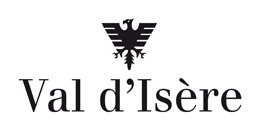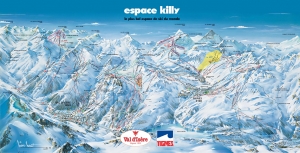Val d'Isere - introduction
 France
France
-
-
-
-
-
-
-
-
-
-
-
-
-
-
-
-
-
-
-
-
-
-
-
 Switzerland
Switzerland
-
Some 80 years have slipped by since the first drag-lift and cable- car opened in Val d’Isère and the process began of turning the village into one of the world’s most famous ski resorts.
It was the brainchild of a Parisian adventurer called Jacques Mouflier who hiked up the mountains here above a remote and beautiful valley close to the French frontier with Italy. He saw the potential way back in 1929, but it took him a decade to find the investors prepared to back what many saw as a madcap scheme.
In those days the village with its iconic 17th century church and cluster of buttressed stone farmhouses was only reached by a donkey track from the nearest town of Bourg St Maurice which was itself a remote outpost reached with difficulty from Chambéry and Lyon.
Today Val d’Isère can be reached easily by Eurostar from London to St Pancras to Bourg-St-Maurice and a 40-minute transfer by bus or taxi.
The mountains and the church in the old village centre remain just as beautiful as ever, but just about everything else has changed.
The ski area, the Espace Killy, is named in honour of Val’s most famous son, Jean-Claude who won triple gold at the1968 Grenoble Olympics. The slopes, shared with neighbouring Tignes amount to 300km of pistes served by 78 lifts.
Unlike so many resorts that lay claim to a hundreds of kilometres of runs, the pistes of Val and Tignes are naturally linked without the need for long and boring connecting trails or lifts. The standard of piste preparation – at least on the Val side – is some of the best in the Alps.
Most importantly in these confusing climatic times, Val d’Isère is snowsure from when it opens at the end of November until the end of the season in the first week of May. The village stands at a respectable 1850m and the skiing on its own Pissaillas Glacier and in neighbouring Tignes the Grande Motte goes up to 3,456m.
For the 1992 Olympics the centre was rebuilt in traditional stone, wood, and slate, with the 1960s architectural debacles tastefully reclad.
Eco For Everything was the cry that still echoes from the town hall. Sometimes environmental ecstasy went a little too far. Val d’Isere prides itself on its free ski bus. Le Train Rouge (which incidentally is neither red nor a train) links the outlying lifts and accommodation bases every three or four minutes throughout the day.
The very best resorts in the world, that group of really only half a dozen with a history going back so many decades, must consistently reinvent themselves to aspire to or maintain their position on the international podium of perfection.
This season – Val d’Isère’s 80th with lifts – sees an exciting transformation. The massif de Solaise had been quite literally remodelled. Some 70,000 cubic metres have been shifted in order to regrade the summit as a new beginner area. There’s a new American-style Day Lodge with – extraordinary for France – a warm and comfortable room for picnickers, complete with a microwave oven.
Outside, there are three covered magic carpet lifts giving access to a whole new snow-sure high altitude beginner area.
But top of the list is the new Solaise gondola that gets you up here – beginner or serious skier and snowboarder – at full throttle in just seven minutes, one of the fastest in the world. The new gondola increases capacity by 40% and can carry up to 3,600 passengers per hour, bringing an end to any previous peak-hour bottlenecks at the base on high-season dates What’s more, to celebrate the launch, there are some useful up-to-half-price lift passes on offer.
The gondola machinery is buried underground at the base area. This significantly reduces the noise impact both for two- and four-legged inhabitants that live here at the foot of the mountain.
Remarkably, the new high-tech lift with its heated seats and WiFi, replaces not just the old Solaise Express chair-lift but the cable car that, with a few updates to the original sardine tin, has been operating since…yes…1938.
The downside to all this magnificence: prices in Val, like the Three Valleys and other major French destinations are loaded to stratospheric levels that are now exaggerated by the post-Brexit referendum effect on exchange rates.
However, and it is a very big ‘however’, the continuing and increasing popularity of Val d’Isere as a destination – not just the 65% of clients who come from the UK – speaks volumes. Val d’Isère manages the mystical mélange of superb skiing for all levels plus ski resort ambience to which other destinations can only aspire.
Highlights
- Snowsure skiing throughout the season because of altitude, microclimate, and largest snowmaking operation in Europe
- Skiing and snowboarding for all levels from complete beginners- in the village and the satellite of La Daille – as we as at altitude in the new beginner area at the top of the Solaise Gondola.
- Challenging skiing and snowboarding for intermediates and advanced. Some of the best lift-accessed off-piste in the world.
- Range of accommodation from studio self-catering apartments to sophisticated chalets and five-star hotels.
- Increasingly varied and lively après-ski and clubbing.
- Easy train access via Bourg-Saint-Maurice
Lowlights
- High prices for accommodation and mountain restaurants
- Given the standard of the resort overall, a surprising limited choice and quality of restaurants both in the resort and on the mountain
- Long airport transfer
Ski area
Village Altitude
1850m
Ski Altitude
1550 - 3450m
Pistes
300km
Green Runs
20
Blue Runs
67
Red Runs
40
Black Runs
26
Total Runs
153
Terrain Park
2
Cabin Lifts
6
Chair Lifts
41
Drag Lifts
19
Total Lifts
78
 France
France
 Switzerland
Switzerland
Some 80 years have slipped by since the first drag-lift and cable- car opened in Val d’Isère and the process began of turning the village into one of the world’s most famous ski resorts.
It was the brainchild of a Parisian adventurer called Jacques Mouflier who hiked up the mountains here above a remote and beautiful valley close to the French frontier with Italy. He saw the potential way back in 1929, but it took him a decade to find the investors prepared to back what many saw as a madcap scheme.
In those days the village with its iconic 17th century church and cluster of buttressed stone farmhouses was only reached by a donkey track from the nearest town of Bourg St Maurice which was itself a remote outpost reached with difficulty from Chambéry and Lyon.
Today Val d’Isère can be reached easily by Eurostar from London to St Pancras to Bourg-St-Maurice and a 40-minute transfer by bus or taxi.
The mountains and the church in the old village centre remain just as beautiful as ever, but just about everything else has changed.
The ski area, the Espace Killy, is named in honour of Val’s most famous son, Jean-Claude who won triple gold at the1968 Grenoble Olympics. The slopes, shared with neighbouring Tignes amount to 300km of pistes served by 78 lifts.
Unlike so many resorts that lay claim to a hundreds of kilometres of runs, the pistes of Val and Tignes are naturally linked without the need for long and boring connecting trails or lifts. The standard of piste preparation – at least on the Val side – is some of the best in the Alps.
Most importantly in these confusing climatic times, Val d’Isère is snowsure from when it opens at the end of November until the end of the season in the first week of May. The village stands at a respectable 1850m and the skiing on its own Pissaillas Glacier and in neighbouring Tignes the Grande Motte goes up to 3,456m.
For the 1992 Olympics the centre was rebuilt in traditional stone, wood, and slate, with the 1960s architectural debacles tastefully reclad.
Eco For Everything was the cry that still echoes from the town hall. Sometimes environmental ecstasy went a little too far. Val d’Isere prides itself on its free ski bus. Le Train Rouge (which incidentally is neither red nor a train) links the outlying lifts and accommodation bases every three or four minutes throughout the day.
The very best resorts in the world, that group of really only half a dozen with a history going back so many decades, must consistently reinvent themselves to aspire to or maintain their position on the international podium of perfection.
This season – Val d’Isère’s 80th with lifts – sees an exciting transformation. The massif de Solaise had been quite literally remodelled. Some 70,000 cubic metres have been shifted in order to regrade the summit as a new beginner area. There’s a new American-style Day Lodge with – extraordinary for France – a warm and comfortable room for picnickers, complete with a microwave oven.
Outside, there are three covered magic carpet lifts giving access to a whole new snow-sure high altitude beginner area.
But top of the list is the new Solaise gondola that gets you up here – beginner or serious skier and snowboarder – at full throttle in just seven minutes, one of the fastest in the world. The new gondola increases capacity by 40% and can carry up to 3,600 passengers per hour, bringing an end to any previous peak-hour bottlenecks at the base on high-season dates What’s more, to celebrate the launch, there are some useful up-to-half-price lift passes on offer.
The gondola machinery is buried underground at the base area. This significantly reduces the noise impact both for two- and four-legged inhabitants that live here at the foot of the mountain.
Remarkably, the new high-tech lift with its heated seats and WiFi, replaces not just the old Solaise Express chair-lift but the cable car that, with a few updates to the original sardine tin, has been operating since…yes…1938.
The downside to all this magnificence: prices in Val, like the Three Valleys and other major French destinations are loaded to stratospheric levels that are now exaggerated by the post-Brexit referendum effect on exchange rates.
However, and it is a very big ‘however’, the continuing and increasing popularity of Val d’Isere as a destination – not just the 65% of clients who come from the UK – speaks volumes. Val d’Isère manages the mystical mélange of superb skiing for all levels plus ski resort ambience to which other destinations can only aspire.
Highlights
- Snowsure skiing throughout the season because of altitude, microclimate, and largest snowmaking operation in Europe
- Skiing and snowboarding for all levels from complete beginners- in the village and the satellite of La Daille – as we as at altitude in the new beginner area at the top of the Solaise Gondola.
- Challenging skiing and snowboarding for intermediates and advanced. Some of the best lift-accessed off-piste in the world.
- Range of accommodation from studio self-catering apartments to sophisticated chalets and five-star hotels.
- Increasingly varied and lively après-ski and clubbing.
- Easy train access via Bourg-Saint-Maurice
Lowlights
- High prices for accommodation and mountain restaurants
- Given the standard of the resort overall, a surprising limited choice and quality of restaurants both in the resort and on the mountain
- Long airport transfer
| Ski area | |
|---|---|
| Village Altitude | 1850 m |
| Ski Altitude | 1550 - 3450 m |
| Pistes | 300 km |
| Green Runs | 20 |
| Blue Runs | 67 |
| Red Runs | 40 |
| Black Runs | 26 |
| Total Runs | 153 |
| Terrain Park | 2 |
| Cabin Lifts | 6 |
| Chair Lifts | 41 |
| Drag Lifts | 19 |
| Total Lifts | 78 |


 Back
Back
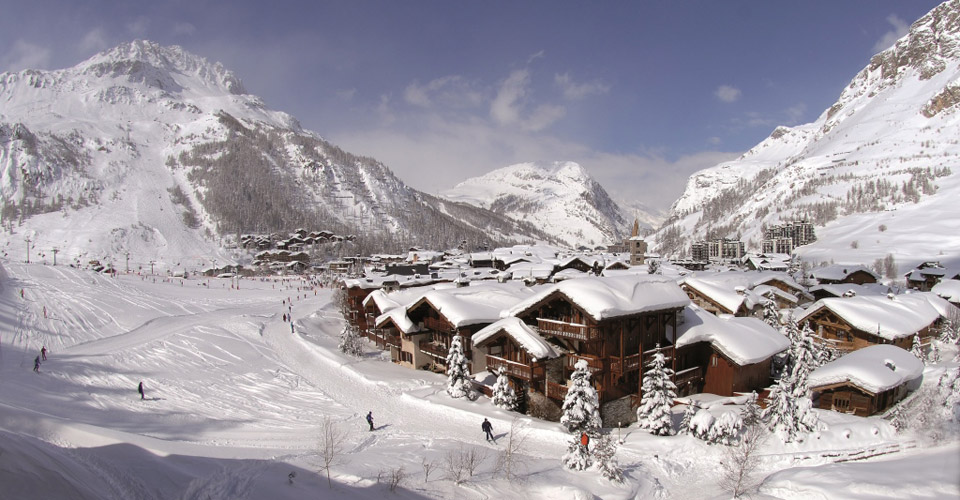
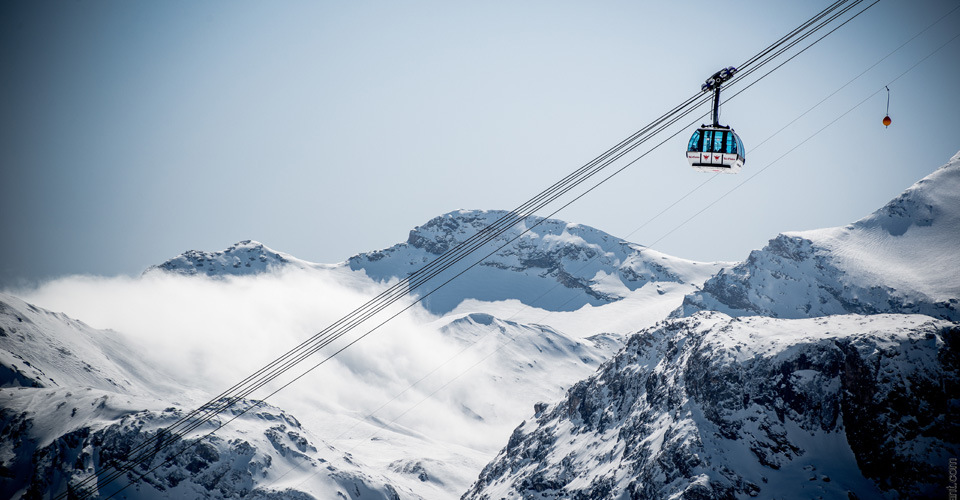
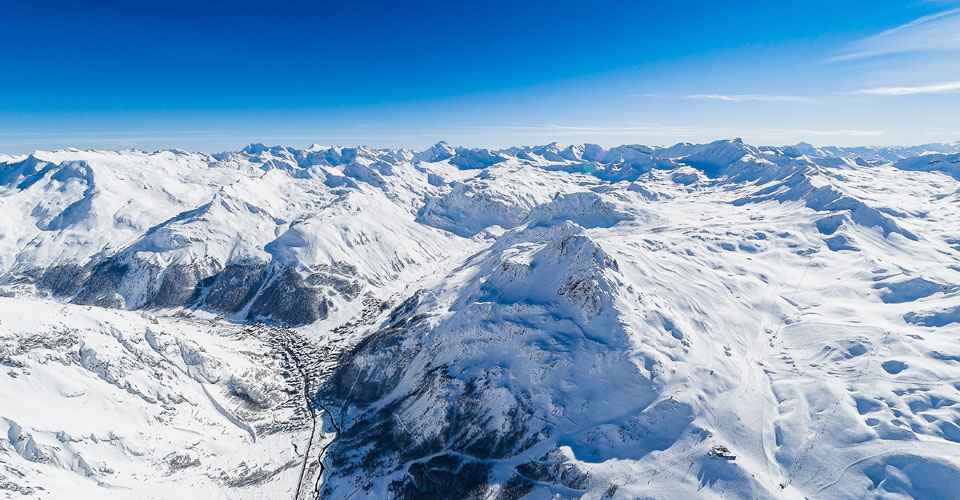
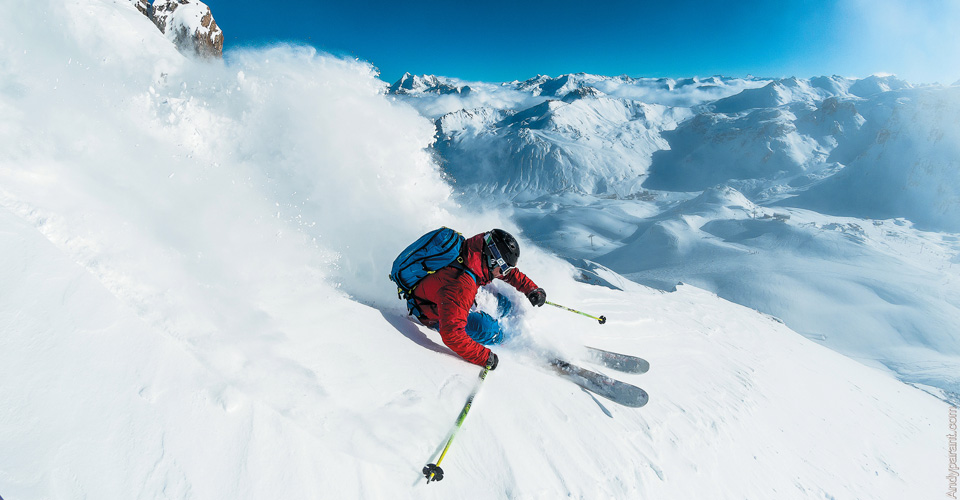
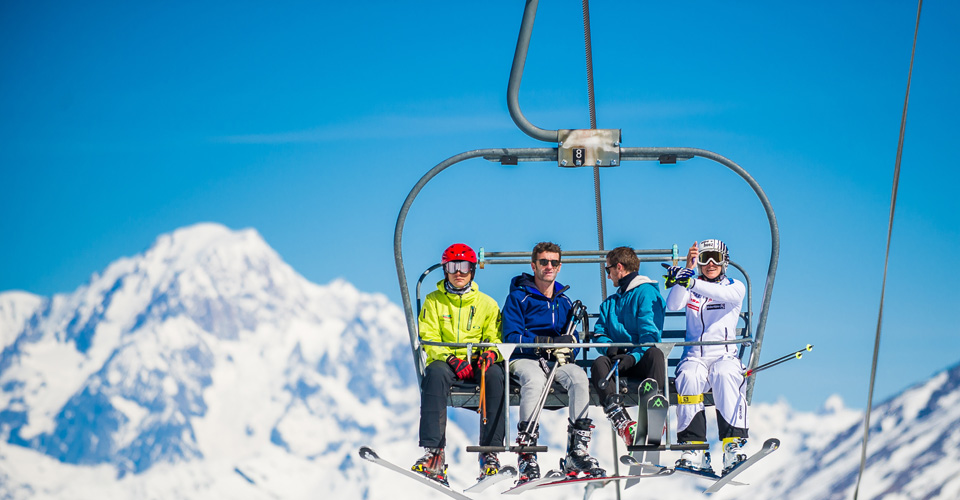
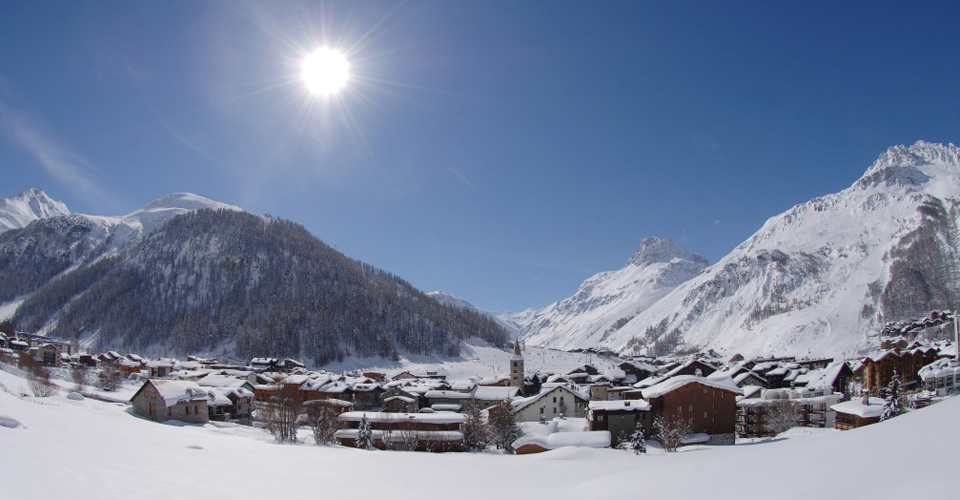
 Austria
Austria Italy
Italy